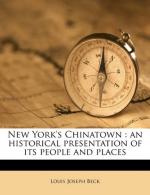|
This section contains 271 words (approx. 1 page at 300 words per page) |

|
701-761
Painter, Poet, And Calligrapher
Life. Known as Wei Mojie, after the popular Buddhist saint Vimalakirti, Wang Wei was a native of Taiyuan, Qi County, Shanxi Province. He passed the civil examination to become a jinshi (presented scholar) at twenty-one. Before he was thirty, he lived for a while as a recluse on Mount Song, near the eastern capital of Luoyang. Even after taking official positions such as minister to the right and censor, he often spent time alone at a villa in the scenic Chongnan Mountains near Chang'an, where he studied Buddhism. In 756, during the An Lushan revolt against the Tang, he was forced to work for the rebel government, which led to setbacks in his career after the success of imperial forces and further withdrawal from society.
Poet and Artist. In his early life Wang wrote many positive and high-spirited poems, but his mood...
|
This section contains 271 words (approx. 1 page at 300 words per page) |

|




